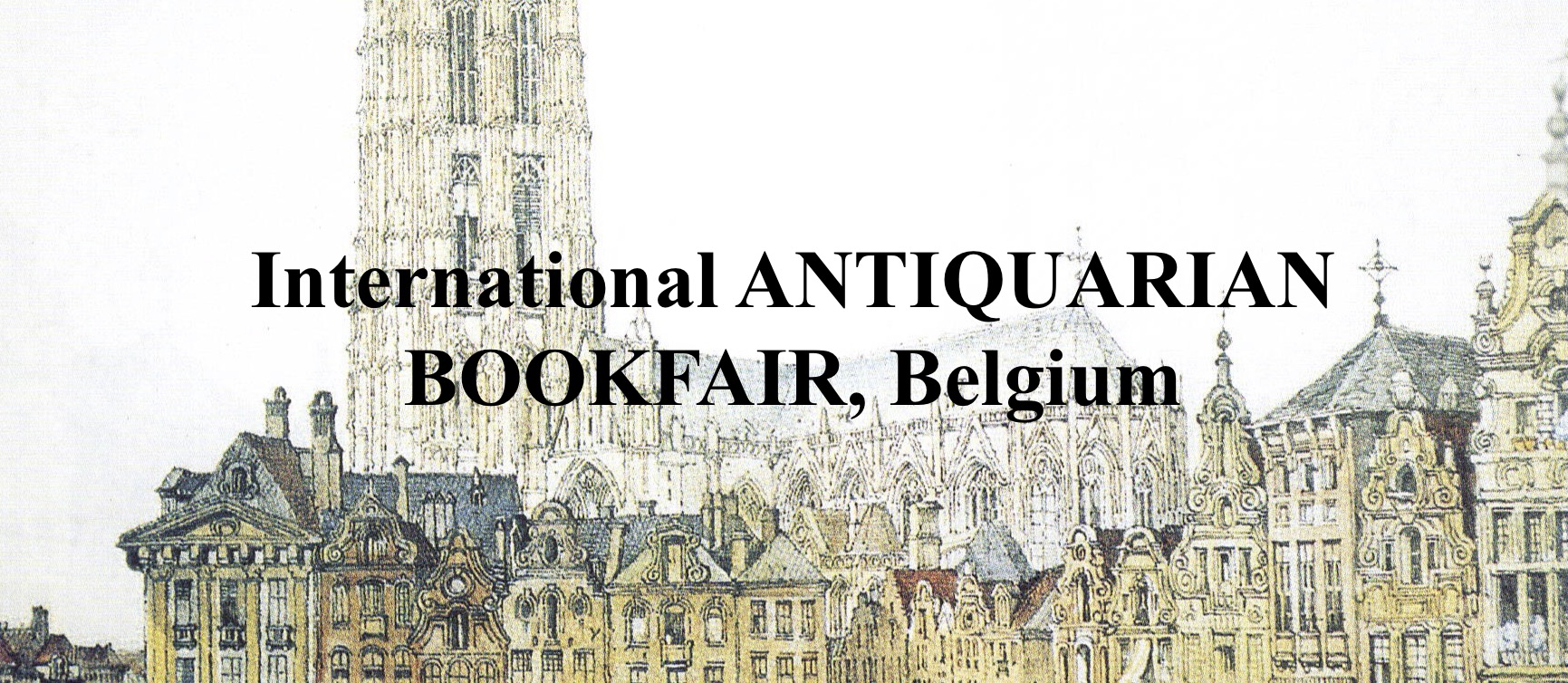
Antiquarenbeurs Mechelen
Exhibitor
Gert Jan Bestebreurtje Rare BooksLangendijk 8
4132 AK Vianen
Netherlands
Phone
+31-(0)347-322548 +31-(0)347-322548Website
www.gertjanbestebreurtje.com
The story of the Cape to Cairo Railway & River Route from 1887 to 1922. The romance of a great project and how it has materialised.
London, The Pioneer Publishing Company Limited, 1923-26.
4 volumes + map portfolio. Original black hard-grain half morocco, spines lettered and decorated in gilt. Profusely illustrated with mounted photographic portraits, halftone plates (many folding) and text illustrations, and folding maps, most in colour (of which 12 in the map porfolio). First edition. - A luxurious production documenting the completion of the most important engineering project undertaken in Africa up until that time, a project that Rhodes had identified as being essential for the economic developement of South Africa. The Story of the Cape to Cairo Railway and River Route from 1887 to 1922. The iron spine and ribs of Africa. The Cape to Cairo Railway was an unfinished project to create a railway line crossing Africa from south to north. It would have been the largest and most important railway of that continent. It was planned as a link between Cape Town in South Africa and Port Said in Egypt. The project was conceived by Cecil Rhodes.
By 1914 there was already a 2,600-mile link from Cape Town to Bukama in the Congo; two sections of river steamer and an isolated length of Congolese railway took the route to Stanleyville. In the north, the line was continuous from Cairo to Luxor and from Wadi Halfa to Kosti; these two sections were connected by 250 miles of Nile steamer, but the route to cross uncharted parts of the northern Congo and southern Sudan was not even surveyed by the time of publication, and the scheme was never completed.
The contents include i.a. essays by Winston Churchill, Francis Younghusband, Harry Johnston, Theodore Roosevelt, and F.C. Selous, on the history, society, and natural conditions of the African states to be traversed by the prospective railway; the mercantile potential of these states and the benefit of rail transport; the railway engineering feats undertaken in East Africa; touristic topics, such as ethnographic studies of tribespeople; big-game hunting; the "mysteries" of the Great Zimbabwe; the progress of colonial society in Cairo; and genial fantasies concerning the future of an "unlocked" continent that would be crossed by great silver airships stopping airily at new cities to disembark their passengers; merchants, mining engineers, and families of colonial administrators' (See Merrington A Staggered Orientalism: The Cape-to-Cairo Imaginary", in Poetics Today 22.2, 2001).
Added the rare SYNOPSIS of principal contents. The story of the Cape to Cairo Railway & River Route from 1887 to 1922. London 1922. Wrappers. Profussely illustrated. 50 pp. - A very attractive set of an encyclopaedic work.
SAB IV, p.743-744
4 volumes + map portfolio. Original black hard-grain half morocco, spines lettered and decorated in gilt. Profusely illustrated with mounted photographic portraits, halftone plates (many folding) and text illustrations, and folding maps, most in colour (of which 12 in the map porfolio). First edition. - A luxurious production documenting the completion of the most important engineering project undertaken in Africa up until that time, a project that Rhodes had identified as being essential for the economic developement of South Africa. The Story of the Cape to Cairo Railway and River Route from 1887 to 1922. The iron spine and ribs of Africa. The Cape to Cairo Railway was an unfinished project to create a railway line crossing Africa from south to north. It would have been the largest and most important railway of that continent. It was planned as a link between Cape Town in South Africa and Port Said in Egypt. The project was conceived by Cecil Rhodes.
By 1914 there was already a 2,600-mile link from Cape Town to Bukama in the Congo; two sections of river steamer and an isolated length of Congolese railway took the route to Stanleyville. In the north, the line was continuous from Cairo to Luxor and from Wadi Halfa to Kosti; these two sections were connected by 250 miles of Nile steamer, but the route to cross uncharted parts of the northern Congo and southern Sudan was not even surveyed by the time of publication, and the scheme was never completed.
The contents include i.a. essays by Winston Churchill, Francis Younghusband, Harry Johnston, Theodore Roosevelt, and F.C. Selous, on the history, society, and natural conditions of the African states to be traversed by the prospective railway; the mercantile potential of these states and the benefit of rail transport; the railway engineering feats undertaken in East Africa; touristic topics, such as ethnographic studies of tribespeople; big-game hunting; the "mysteries" of the Great Zimbabwe; the progress of colonial society in Cairo; and genial fantasies concerning the future of an "unlocked" continent that would be crossed by great silver airships stopping airily at new cities to disembark their passengers; merchants, mining engineers, and families of colonial administrators' (See Merrington A Staggered Orientalism: The Cape-to-Cairo Imaginary", in Poetics Today 22.2, 2001).
Added the rare SYNOPSIS of principal contents. The story of the Cape to Cairo Railway & River Route from 1887 to 1922. London 1922. Wrappers. Profussely illustrated. 50 pp. - A very attractive set of an encyclopaedic work.
SAB IV, p.743-744
€ 2.750
View exhibitor's highlights
